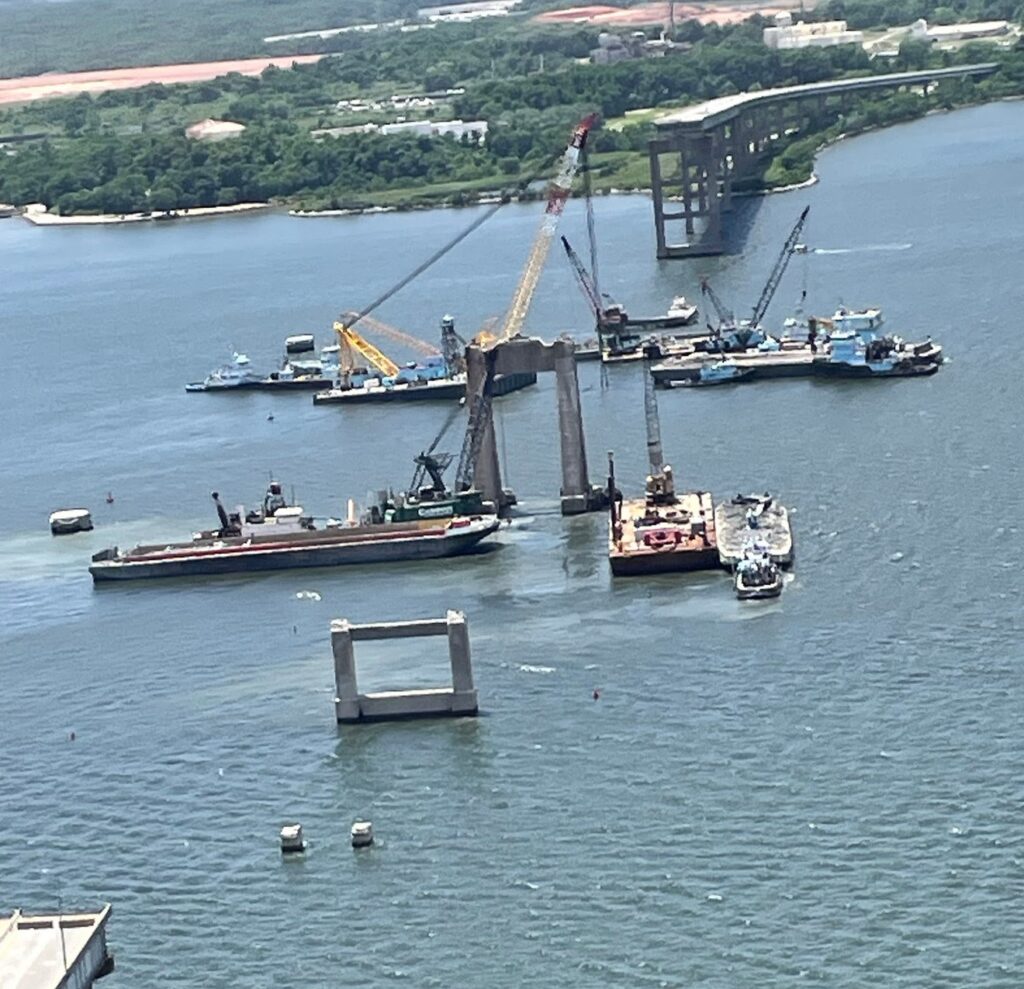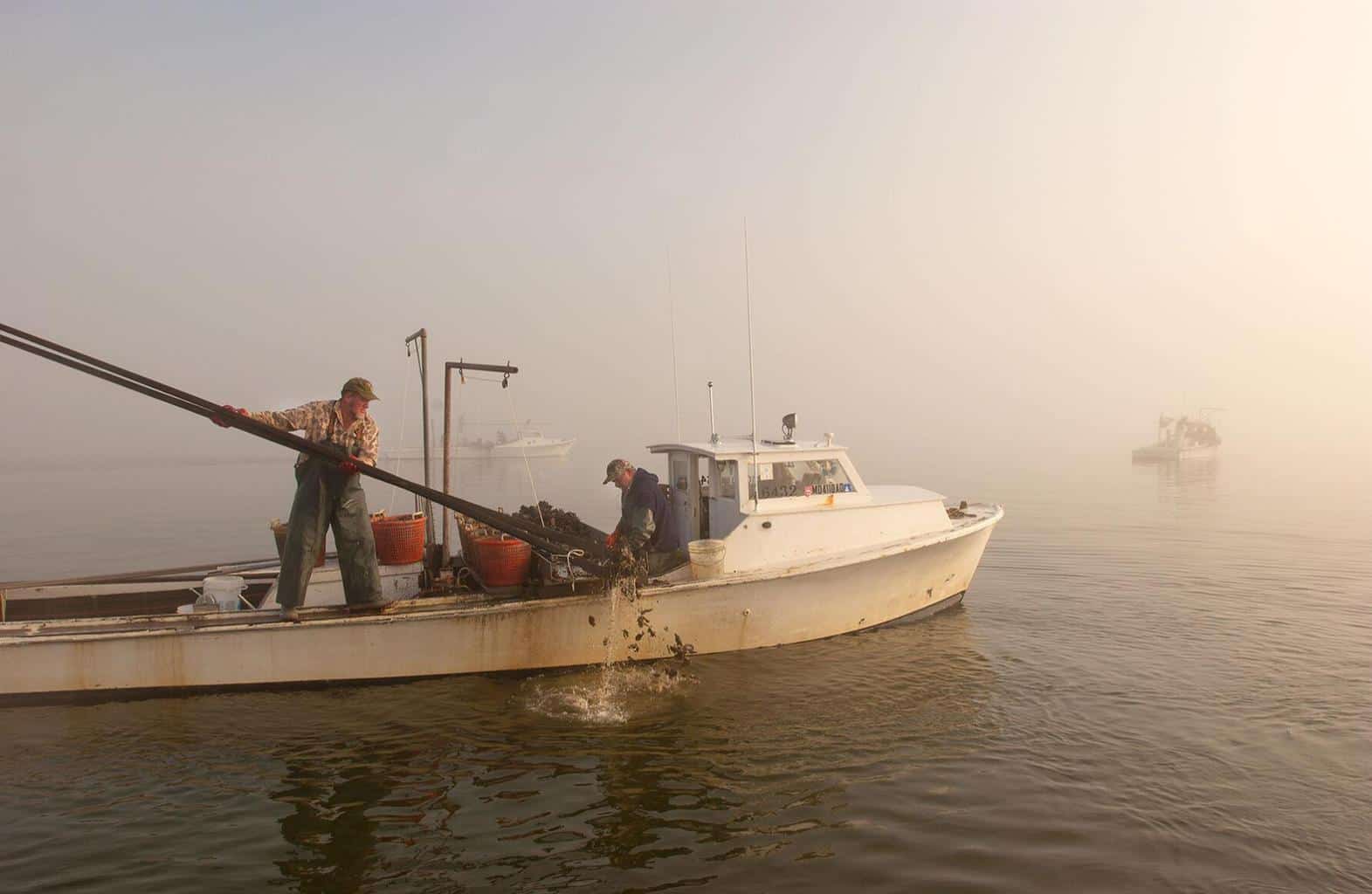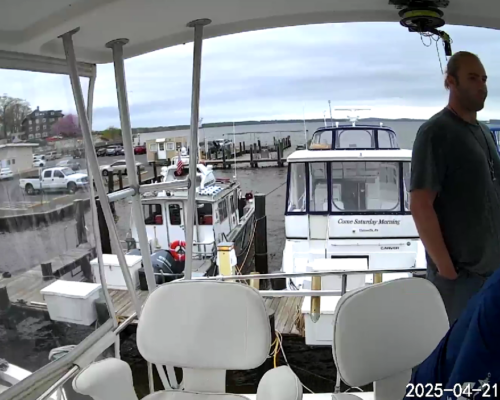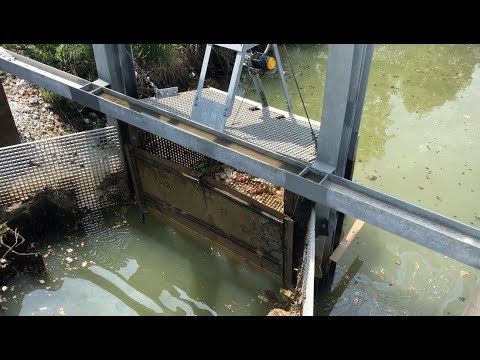Less than 2.5 months after an unprecedented disaster in the Chesapeake Bay region, a vital maritime passage has been brought back to life.
The Fort McHenry Federal Channel, the only Patapsco River channel large enough for the ultralarge vessels that serve the Port of Baltimore, was fully reopened Monday. It became completely blocked when the container ship Dali crashed into the Key Bridge on March 26 and brought much of the bridge down with it.
Little by little the Key Bridge Response Unified Command restored larger and larger stretches of the channel for vessels of various lengths to pass through. But this is the first time the channel is open with its original operational dimensions of 700 feet wide and 50 feet deep.
U.S. Army Corps of Engineers(USACE) and U.S. Navy Supervisor of Salvage and Diving did a survey on Monday, June 10, certifying that the riverbed is safe for transit all the way down to the 50-foot-deep mud line. Now, the fully-opened channel will allow for two-way traffic and eliminate the need for additional safety requirements (like wind restrictions) that were needed while the channel width was reduced.
Getting the channel reopened was quite a feat. Unified Command says that 1,587 individual responders participated, along with a fleet of 18 barges, 22 tugboats, 13 floating cranes, 10 excavators, and four survey boats.
“We’ve cleared the Fort McHenry Federal Channel for safe transit. USACE will maintain this critical waterway as we have for the last 107 years,” said Col. Estee Pinchasin, Baltimore District commander. “I cannot overstate how proud I am of our team. It was incredible seeing so many people from different parts of our government, from around our country and all over the world, come together in the Unified Command and accomplish so much in this amount of time.”
Wreckage is still being moved to Sparrows Point for processing, and once the steel and other materials are cut into pieces, they are taken offsite for recycling.
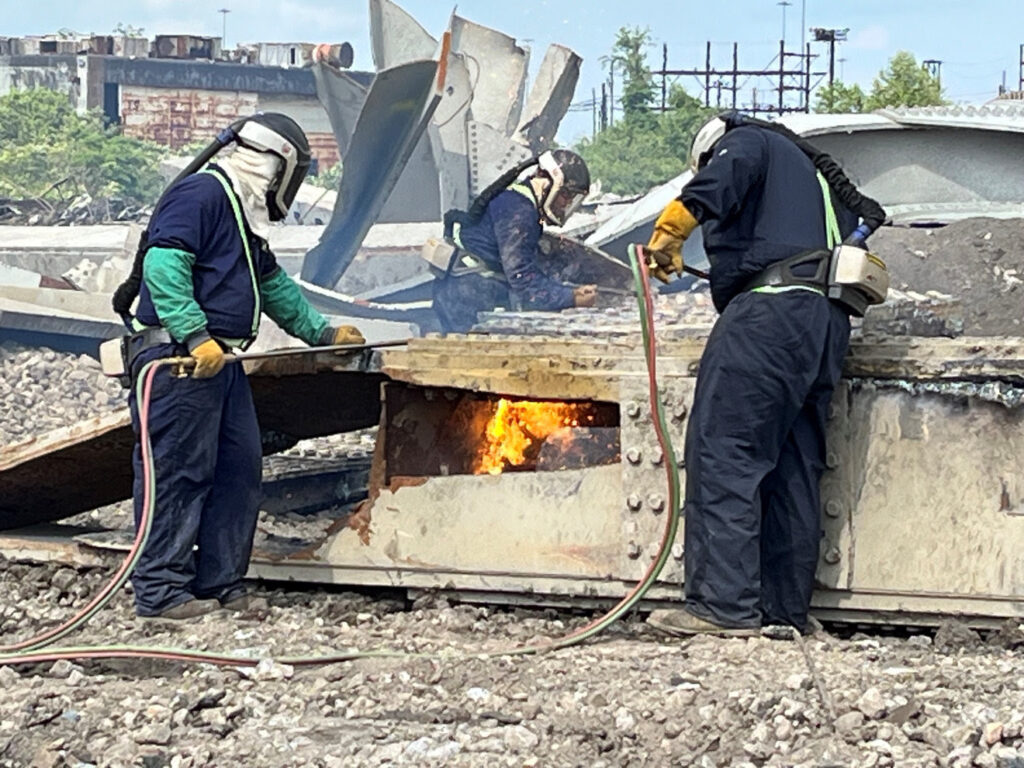
To make sure that future dredging operations aren’t impacted, the response team will continue to survey and remove steel down below the 50-foot mud line.

